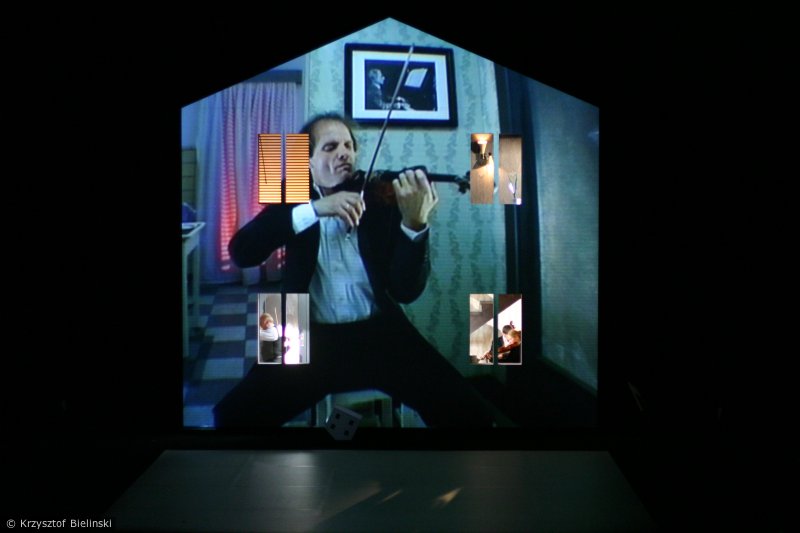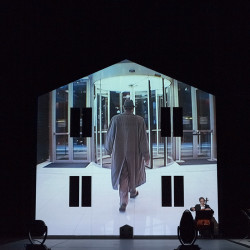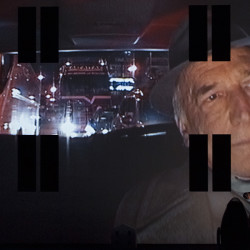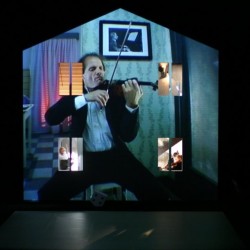SEE the essay at: https://www.academia.edu/1718457/Eraritjaritjaka_and_the_Intermediality_of_Heiner_Goebbels_Music_Theatre
Photos: http://www.lifo.gr/team/omorfia/46520
There are some theoretical and methodological considerations that give direction to this focus. The discourse about intermediality [PPT] provides a series of insights and differentiations, that inform my brief analysis of Heiner Goebbels’ Eraritjaritjaka: Christopher Balme, [PPT] for example, describes one particular category of intermediality, which is most relevant in this context, as “the attempt to realize in one medium the aesthetic conventions and habits of seeing and hearing in another medium.” He elaborates: “The key term here is conventionality. This means that media are regarded as a set of historically contingent conventions, which may or may not be predicated on their technical devices.” (Balme 2004, 7). In addition to conventions of seeing and hearing, intermediality can also include the transfer between different habits of meaning-making, as Irina Rajewsky reminds us calling it a [PPT] “process of meaning making of a medial product with reference to the semiotic system of a medium conventionally perceived as distinct within the means of an enabling medium” (Rajewsky 2002: 5)[i].
When thinking of the particular types of cohesion and amalgamation that music, film and theatre undergo in cases of this kind of intermediality, I would like to distinguish between three different types or processes of this cohesion: the first could be described as a kind of picture puzzle [PPT] an image within an image, that you may see or may not, but whose emergence does not prevent you from seeing the whole. The consequent process is the emerging of something (see figure 1, a photograph of snowy tires, from which a dog’s face emerges).
Secondly, music-scenic events may present themselves as [PPT] Reversible ambiguous figures: images, sounds or actions that can seem to be perceived alternately to be one or the other, but never both at the same time.[ii] The central process or movement is the tilting of the eye’s focus (see figure 2, a classic visual pun, in which you can either see an elderly lady or a young woman, but not both at the same time).
A third condition, that music-theatre may find itself in, is the stage of liminality [PPT]: being on a threshold, “betwixt and between” (Turner 1986: 93).[iii] Distinguishing itself from Victor Turner’s theory of liminal phenomena in social rites, liminality in music theatre or film, as I would describe it, may not necessarily be a temporary passage between the two, e.g., between music and theatre as two conventionally identified arts, or media, or dispositions of perception, but it could be a sustained position between them. I would suggest a process of ‘hovering’ as the movement that symbolizes this state.[iv] (Fittingly, in figure 3 M.C. Escher keeps his black and white birds hovering over and out of a tiled ground. In the middle of the picture the birds are in a liminal state: not square fields anymore, not yet black or white birds.)
In looking at Heiner Goebbels’ Eraritjaritjaka (Lausanne 2004) now, I will argue that the different art forms, particularly theatre, music, visual art (décor and lighting) and film relate to each other intermedially in one or more of the ways above: emerging, tilting and hovering. Rather than trying to identify them one by one, I will look at their coexistence and amalgamation within several key moments the production.
[i] “[…] Verfahren der Bedeutungskonstitution eines medialen Produkts durch Bezugnahme auf […] das semiotische System […] eines konventionell distinkt wahrgenommenen Mediums mit den dem kontaktnehmenden Medium eigenen Mitteln“ (all translations in this chapter are mine).
[ii] “Eine Kippfigur zeichnet sich […] dadurch aus, daß sie immer zwei Sichtweisen eines Phänomens oder eines Gegenstandes erlaubt, die jedoch niemals gemeinsam miteinander auftreten können.” (Flaßpöhler; Rausch; Wald 2007: 8).
[iii] See also: Broadhurst, Susan (1999), Liminal Acts. A Critical Overview of Contemporary Performance and Theory. London/New York, Cassell.
[iv] In this sense, music-theatre can be liminal theatre in Susan Broadhurst’s sense; that is experimental, hybrid, marginal, intersemiotic, disquieting, playful etc. (Broadhurst 1999: 1 and 69), but in this chapter I am just using liminal when referring to singular performative events that are situated in an intermedial no-man’s land, which does not necessarily characterize the entire performance as liminal.
[v] From: http://soyooart.com/image/face/012002doggyb.gif, accessed 02.07.2006.
[vi] From http://www.sapdesignguild.org/resources/optical_illusions/foreground_back ground.html, accessed on 02.07.2006.
[vii] From http://www.artchive.com/artchive/E/escher/escher_day_night.jpg.html, accessed on 02.07.2006.




